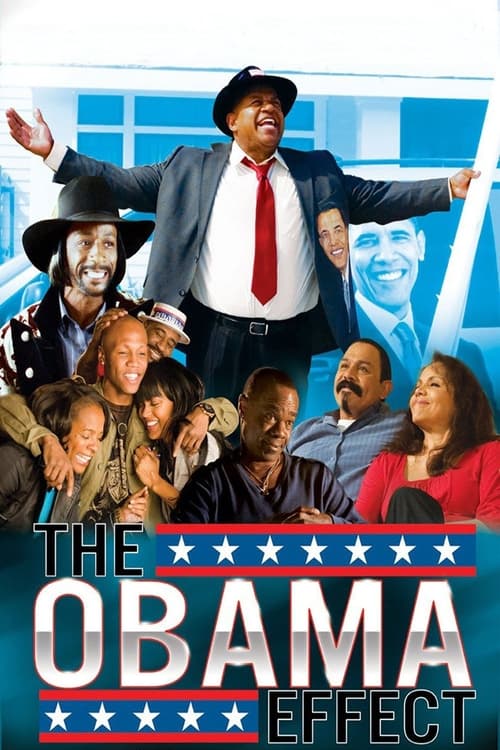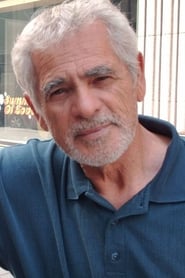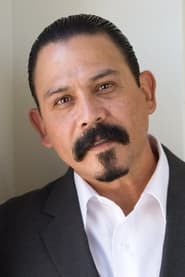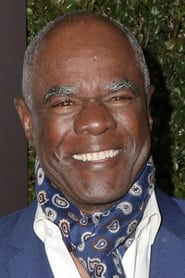
Ask Your Own Question
What is the plot?
What is the ending?
In the ending of "The Obama Effect," the main character, a college professor named Elston, faces a personal and professional crisis that leads him to reevaluate his life and the impact of his choices. After a series of events that challenge his beliefs and relationships, he ultimately finds a renewed sense of purpose and commitment to his community, inspired by the ideals of hope and change represented by President Obama.
As the film progresses towards its conclusion, Elston's journey culminates in a powerful moment of realization and transformation. He decides to take action in his community, stepping up to make a difference and encouraging others to do the same. The film ends on a hopeful note, emphasizing the importance of personal responsibility and the potential for change.
Now, let's delve into the ending in a more detailed, chronological narrative.
The final act of "The Obama Effect" begins with Elston grappling with the fallout from his earlier decisions. He has faced significant challenges, including the disintegration of his marriage and the disillusionment of his students. The weight of his choices hangs heavily on him, and he feels a deep sense of failure both personally and professionally.
In a pivotal scene, Elston attends a community meeting where local leaders discuss the issues facing their neighborhood. The atmosphere is charged with frustration and a desire for change. As he listens to the passionate voices around him, Elston feels a stirring within himself. He recalls the hope and inspiration that President Obama's campaign brought to many, including himself. This moment serves as a catalyst for Elston, igniting a spark of determination to take action.
Elston stands up, his heart racing, and shares his own story with the group. He speaks candidly about his struggles, his mistakes, and the importance of taking responsibility for one's actions. His vulnerability resonates with the audience, and he begins to see the power of community and collective action. The scene is filled with emotion as people nod in agreement, some even moved to tears by his honesty.
As the meeting concludes, Elston is approached by several community members who express their support and willingness to work together for change. This interaction marks a turning point for Elston; he realizes that he is not alone in his struggles and that together, they can make a difference. The camaraderie and shared purpose fill him with hope, and he feels a renewed sense of belonging.
In the following scenes, we see Elston actively engaging with the community. He organizes workshops and discussions, encouraging others to voice their concerns and ideas. The transformation in Elston is palpable; he is no longer the defeated man from earlier in the film but a leader who inspires others. His passion is infectious, and the community begins to rally around him, united by a common goal.
Meanwhile, Elston's relationship with his estranged wife, who has been a source of pain and conflict, begins to shift. In a heartfelt conversation, they confront their past and the mistakes that led to their separation. Elston expresses his desire to change and to be a better man, not just for himself but for their family. This moment of vulnerability opens the door for reconciliation, and they begin to rebuild their relationship, step by step.
The film culminates in a community event where Elston and his neighbors come together to celebrate their progress. The atmosphere is filled with joy and hope, as people share their stories of change and empowerment. Elston stands at the forefront, beaming with pride as he witnesses the impact of their collective efforts. The camera captures the smiles, laughter, and sense of unity among the community members, highlighting the film's central message of hope and the power of individual and collective action.
As the credits roll, we see Elston continuing his work in the community, now fully committed to making a difference. His journey has transformed him, and he embodies the ideals of hope and change that inspired him from the beginning. The film closes on a hopeful note, leaving the audience with a sense of possibility and the belief that change is achievable when individuals come together for a common cause.
Is there a post-credit scene?
The movie "The Obama Effect," produced in 2012, does not contain a post-credit scene. The film concludes its narrative without any additional scenes or content after the credits roll. The story wraps up with a focus on the main character, a college professor named Elston, who grapples with his personal and professional challenges while being inspired by President Obama's election. The film emphasizes themes of hope, change, and the impact of leadership on individual lives, leaving the audience with a sense of resolution as the credits begin to roll.
What motivates the main character, a professor, to run for office?
The main character, Dr. Charles C. W. 'Chuck' Smith, is motivated to run for office after witnessing the impact of Barack Obama's election on his community. He feels a deep sense of responsibility to inspire change and address the issues affecting his neighborhood, particularly the struggles faced by African Americans. His personal experiences and the desire to make a difference drive him to take this bold step.
How does Chuck's relationship with his family evolve throughout the film?
Chuck's relationship with his family, particularly with his wife, is strained as he becomes increasingly consumed by his political ambitions. Initially supportive, his wife, played by actress Tatyana Ali, grows concerned about the toll his campaign takes on their family life. As Chuck faces challenges in his campaign, their emotional distance becomes more pronounced, leading to moments of tension and heartfelt discussions about their priorities and the sacrifices they must make.
What challenges does Chuck face during his campaign?
Chuck faces numerous challenges during his campaign, including skepticism from the community, opposition from established political figures, and the pressure of balancing his academic career with his newfound political aspirations. He struggles with self-doubt and the fear of failure, particularly as he navigates the complexities of running for office while trying to maintain his integrity and connect with voters on a personal level.
How does the film portray the impact of Obama's presidency on the characters?
The film portrays the impact of Obama's presidency as a source of inspiration and hope for the characters, particularly Chuck. His election serves as a catalyst for Chuck's decision to run for office, igniting a sense of possibility within him and his community. The characters reflect on how Obama's success challenges their perceptions of what is achievable, motivating them to pursue their own dreams and aspirations in the face of adversity.
What role do Chuck's students play in the story?
Chuck's students play a significant role in the story as they represent the younger generation's hopes and aspirations. They look up to Chuck as a mentor and are influenced by his decision to run for office. Their interactions with him highlight the themes of education, empowerment, and the importance of civic engagement. As Chuck navigates his campaign, he also seeks to inspire his students to become active participants in their community and to believe in their ability to effect change.
Is this family friendly?
"The Obama Effect," produced in 2012, is a drama that explores themes of race, identity, and personal struggle. While the film carries a positive message about hope and change, there are several aspects that may be considered objectionable or upsetting for children or sensitive viewers:
-
Racial Tensions: The film addresses issues of racism and discrimination, which may be difficult for younger audiences to understand or process.
-
Emotional Struggles: Characters experience significant emotional turmoil, including feelings of inadequacy, frustration, and despair, which could be intense for sensitive viewers.
-
Health Issues: The protagonist faces a serious health crisis, which is depicted in a way that may be distressing for some viewers, particularly children.
-
Confrontational Scenes: There are moments of conflict and confrontation that may be unsettling, as characters grapple with their beliefs and societal pressures.
-
Mature Themes: The film touches on adult themes such as ambition, failure, and the impact of societal expectations, which may not resonate with younger audiences.
Overall, while the film promotes a hopeful message, its exploration of complex social issues and emotional challenges may not be suitable for all children or sensitive viewers.













































